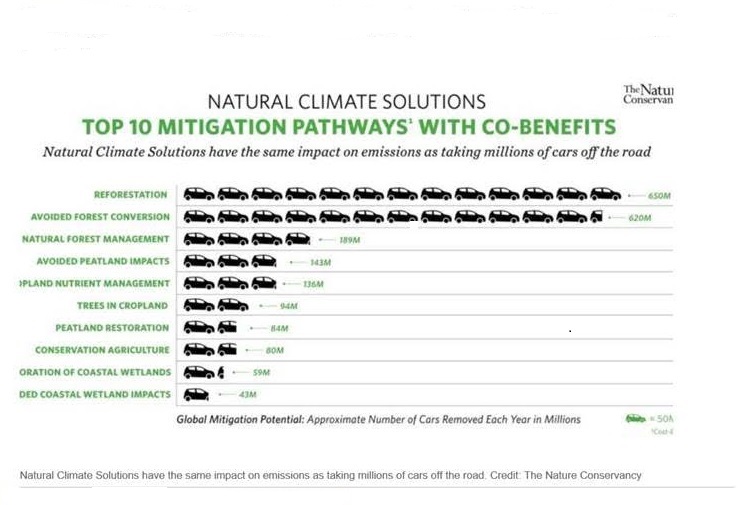Natural climate solutions to curb global temperatures

Nature-based solutions may provide up to 37% of the emission reductions needed by 2030 to keep global temperature increases under 2°C. A new study published in the Proceedings of the National Academy of Sciences, shows that over the next decade, nature can be a significant part of the climate solution. The research conducted by The Nature Conservancy and other 15 institutions,found that the total biophysical potential for natural climate solutions is as much as 23.7 billion tons of carbon dioxide equivalent per year - approximately 30% more than previous estimates. The study’s economic analyses show that half of these natural climate solutions (11.3 billion tons CO2e) offer cost-effective mitigation opportunities, because they cost less than the future impacts of climate change. Many natural climate solutions offer additional benefits such as filtration, flood buffering, improved soil health, protection of habitat and enhanced climate resilience.
The research can be used as a starting point to guide cost-effective implementation of natural pathways around the world. Land-based climate solutions appear in more than 75% of individual country commitments to the Paris Agreement, yet renewable energy, energy efficiency and clean transport together receive nearly 30 times the amount of public mitigation investment that land-based solutions receive. To synthesize the research, Director of Forest Carbon Science at the Nature Conservancy, Bronson Griscom developed a framework to distil the world’s natural climate solutions. A total of 20 specific pathways have been found to account for proven ways of storing and reducing carbon emissions in forests, grasslands and wetlands.
Sectors often viewed as part of the problem have a huge opportunity to transform working lands from carbon emitters to carbon sinks. Forestry and agriculture, for example, are already demonstrating this potential in many parts of the world. From farmers in Northern Africa fighting desertification by planting trees to New Guinean fishing communities planting mangroves to attract fish and store carbon, projects on-the-ground are setting the foundation for what is possible. “The approach is synergistic,” says Justin Adams, managing director for Global Lands at The Nature Conservancy. “If actions are taken now, nature can be an ally for sustainable development, economic growth and a low-carbon future—a future, as Adams puts it, where people and nature can thrive together”.
Resources: Natural climate solutions: research paper | Lands of Opportunity | Article published by The Nature Conservancy | Article published by Phys.org



